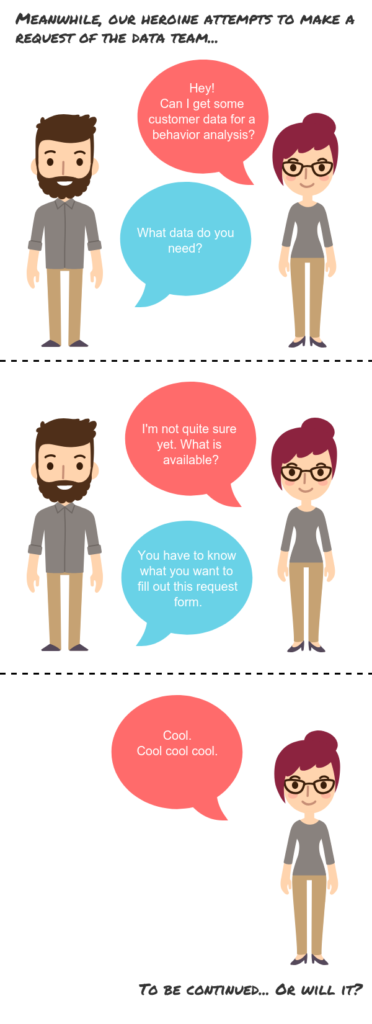If you’re an analyst, you already know exactly what I’m talking about: analysts need data, but they may not know what data they need. Turn that undefined need into a request to the data management team and you will get the well-tuned response of, ‘Well just tell me what you need.’
Here’s why that question is so hard to answer.
Analysts are often asked to figure out open-ended problems such as
- Why are the average handle times increasing in our call centers?
- Who are the best customers to target for our marketing campaign?
- How can we decrease cheating across testing locations?
The real problem with all of these requests is that the answer is unknown. Had the questions been more Business Intelligence/Reporting questions, then the data needs would be clear. Using the previous questions, here are the same asks but more for BI-level answers:
- Are average handle times correlated with agent tenure?
- What are the demographics of our current customer base for a new campaign?
- Can we compare test scores across students from the same high school that took the test in different locations?
These questions are well-defined, and have specific data needs. For example, the data needed for the handle times are agent tenure and respective call volume and total handle times for each.
But when analysts are trying to answer open-ended questions, there may be elements that are unknown that contribute to the potential answer. For example, in order to try and decrease cheating across test centers, first an analysts must be able to find cheaters. This (obviously) includes test scores, but it also may be related to their high school, the payment method used, or the prep tests taken and resulting scores.
The main point here is, analysts don’t know what data they need until they see all the data. Then they can bring the various features in and investigate for patters and correlation. This level of detail can be accomplished from the data management team as follows:
Sample data sets
By giving an analyst a sample of all the data available, they will be better equipped to skim them and come back with a more defined request.
Read-only access
This level of access means the analyst can see and export any and all of the data they need, without disrupting the data management team or underlying data. The issue here may be unencrypted data and/or PII concerns. Analysts should be well-versed in concerns with customer privacy, as well as have already taken internal customer privacy certifications.
Secondary Environment
A lift-and-shift of the data into another, analyst-friendly environment will alleviate data requests all together. This solution alleviates privacy concerns as non-identifiable data (such as customer IDs) can be used instead of names or PII. However, this may be the most cost prohibitive option.
Using these options will alleviate the infuriating relationship between analysts and the data management team, because they all give the analyst a way to review the data initially prior to making a full-fledged request.
